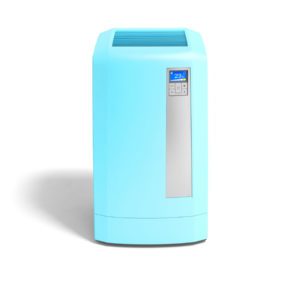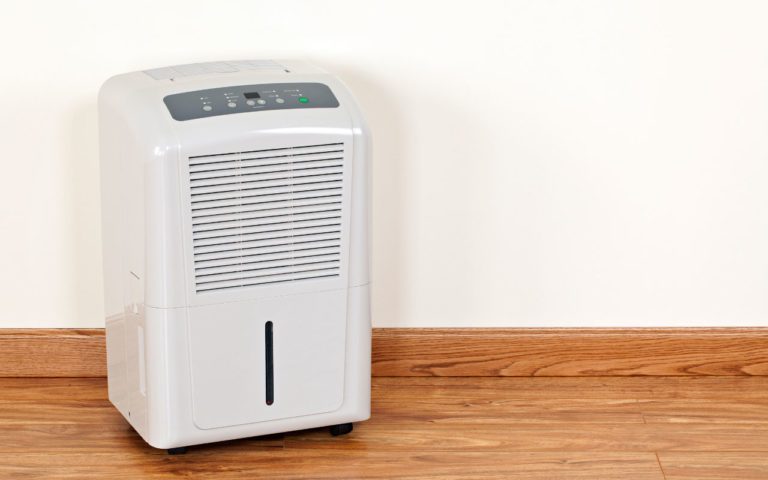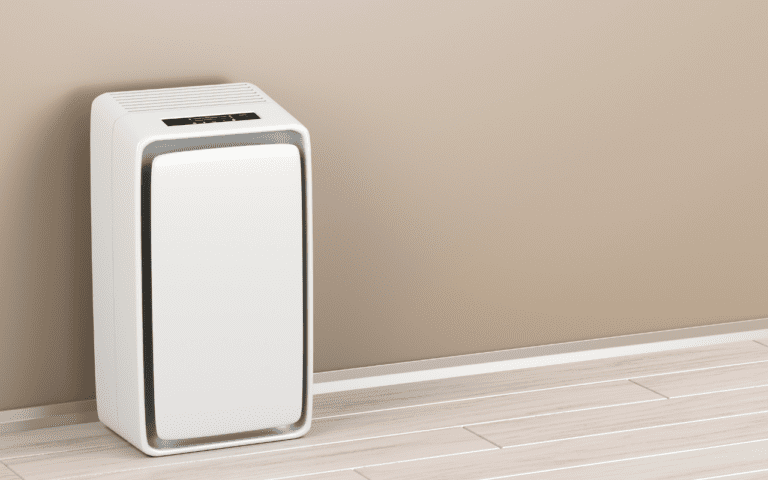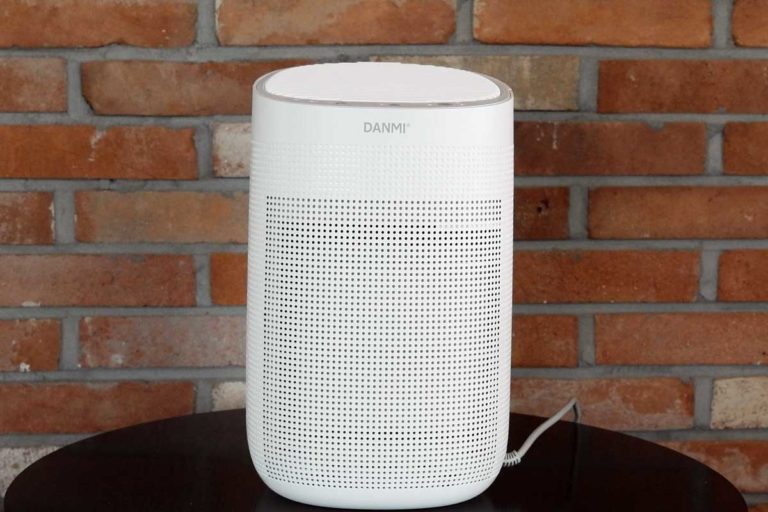ⓘ We are reader-supported and may earn a small commission at no additional cost to you if a purchase is made through one of our links.

If you’re dealing with dampness in your home, then you know just how uncomfortable it can be. Not to mention the risk of respiratory illness and mold growth. A dehumidifier is a great way to combat these problems. But, have you ever wondered how a dehumidifier works?
In this blog, we’ll take a close look at dehumidifiers and how they work to remove moisture from the air. We’ll also discuss some of the benefits of using a dehumidifier in your home.
How Does a Dehumidifier Work?
It works in one of the two ways:
The first way is by using a refrigeration system. This type of dehumidifier contains a cold coil that condenses water from the air. The water is then collected in a pan and drained away.
The second way is by using a chemical process known as absorption/adsorption. This type of dehumidifier contains a hygroscopic substance, such as silica gel, that absorbs water from the air.
Refrigeration
- This machine has a vent that not only draws in the air but does so with style. And by style, I mean warm air. Not cold air, not room-temperature air–we’re talking warm, moist air here.
- As this magical elixir of warmth and moisture passes over frozen pipes, a coolant circulates through them, and (I don’t want to get too technical here) the moisture reverts to liquid water and runs down the pipes.
- Meanwhile, the now-dry air is transferred over the heated compressor unit and reverses back up to its original warmth.
- Then the air returns to the room through another grille.
- At the bottom, a gathering tray catches the moisture in the air.
- An elastic float in the tray rises as it fills with water and (this is the best part) shuts off the machine automatically when it reaches a certain point. So not only does this vent protect your home from moisture damage, but it also lets you know when it needs emptying. That’s the convenience you can’t afford to live without.
Before making your dehumidifier purchase, check out our guide on the best dehumidifiers.
Absorption / Adsorption
Some dehumidifiers use “mopping” to do this same task. A few different mechanisms accomplish this. Absorption occurs when the water seeps into something. Adsorption occurs when the water is collected on top of something.
One could make a case that the dehumidifier was invented by Willis Carrier, an avant-garde of the air conditioner. Carrier’s machines were based on freezing technology and could extract moisture from the air, as well as condition it.
However, it’s also possible that the idea of removing water from the air gradually evolved over time.
James Locke’s absorption dehumidifier and the air conditioner were one of the earliest examples of this type of device. Produced for Honeywell in 1939/1940, it was an innovative design that used the principles of evaporation and absorption to remove moisture from the air.
Let’s take a closer look at how this works:
- A duct draws in moist air from the outside.
- A large spinning wheel made of water-sponging material removes the moisture from the air as it passes over it.
- The air that has been dehumidified is then sent back into the room.
- An electric heating element in the air duct beneath the wheel keeps it warm.
- An exhaust duct directs the heated, moist air out of the room.
This cycle repeats itself until the room is at the desired level of humidity.
The temperature and humidity are regulated by thermostats and sensors. It guarantees that you have the freedom to change the temperature of the room the way you want.
Why does indoor humidity matter?
Humidity is the enemy of your home. You can’t see it, taste, or smell its nasty stench and yet this unwanted atmosphere has a huge impact on everything in our lives—from where we keep valuable items like electronics to how fast things dry out after being wet.
A high level of moisture causes problems such as molding due to increased corrosion which leads to rotted materials; low degrees result in dry, itchy skin and can also cause static electricity. The ideal relative humidity (RH) for a home is between 40-60%.
As any allergies sufferer knows, high humidity levels can wreak havoc on our sinuses. But according to a study by Arundel et al. in 1986, indoor humidity levels that are too high or too low can also support the development of germs, viruses, and other respiratory illnesses. The good news is that the majority of adverse health effects would be minimized if the humidity can be kept within the ideal limit of 40-70%.
In addition, because a dehumidifier helps you manage humidity levels, it’s safe to assume that this gadget is useful for treating colds, allergies, and other illnesses.
What does a dehumidifier do?
The amount of moisture that’s present in the air is known as humidity. The higher the humidity, the more uncomfortable it feels as the air can become quite muggy.
It can be a useful little device if you know how to properly use a dehumidifier. In doing so, it helps to keep your home feeling comfortable and prevents the growth of mold and mildew. But how does a dehumidifier work?
Essentially, it works like a standard household vacuum. It sucks in air from one end and removes any moisture that’s present. The air is then blown back into the room, where it helps to lower the temperature indirectly. This creates a cool, comfortable feeling that’s perfect for relaxing after a long day.
The moisture seeps through to your collection tank, which you need to empty from time to time.
Dehumidifier Basics
Moisture in the air can make for some interesting surprises. Take, for example, how you might feel when you notice that your soda is wet when picking it up on a particularly warm day.
Air will always try to balance out its moisture levels. When the air becomes too dry, it starts pulling in water from surrounding surfaces like your skin or clothes. That’s called condensation!
The dehumidifier does the same thing as well.
There are four major components to a dehumidifier:
- The dehumidifier’s coil is cooled with a FanCompressor. It compresses and circulates refrigerant gas like freon to chill the coil.
- The reheater is a device that captures the heat generated by the cooling process.
- Compressor cooling coils
- Reservoir
Basic Dehumidifier Working Principle
The dehumidifier working principle is actually quite simple. It relies on a basic law of physics called the Clausius-Clapeyron equation. This equation states that the amount of moisture that air can hold decreases as the temperature decreases.
A dehumidifier works by taking advantage of this fact. It follows two principles:
- Remove the moisture from the air: By cooling the air, a dehumidifier can remove moisture from it. It does this by using a fan to draw the moist air over a cold evaporator coil. As the air passes over the coil, the water in it condenses and drips into a pan below the coil.
- Bring the heat back up: A dehumidifier also reheats the air as it passes over a blazing evaporator coil. This helps to prevent the room from feeling too cold.
Conclusion
The science behind it, as you might imagine, is rather complicated. Nonetheless, based on the movement of air temperature through the device, most individuals can comprehend how a dehumidifier works at a large level.
That’s all there is to it!





